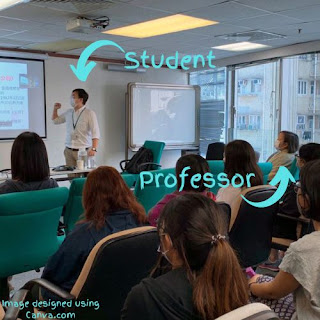Comparing Humanistic Teaching Styles: Nondirective, Learning Contracts, and Autonomy Support
I have experimented with four primary methods of teaching at the college level:
- Didactic lecture/test method: This is the most familiar instructional method where the professor stands in front and talks for 50 minutes while students take notes. Later, students are given tests of recall and understanding to see how much they learned.
- Nondirective: This is the method popularized by Carl Rogers, who called it person-centered learning, since, for Rogers, the goal was not mastering learning objectives but becoming a more complete person. [Check out my book Nondirective Teaching]
- Contracted learning: This is a method popularized by Malcolm Knowles in which students design their own individual syllabi for the course. The professor is there as a resource (and to provide recommendations, advice, and resources if asked). Once agreed upon, students work on their own to satisfy their learning contracts. At the end, they will be evaluated using their own determined criteria. It is also supported by Educational Transactional Analysis.
- Autonomy-supportive method: This isn't an instructional method per se, but more of a style of employing one of the above methods. AST professors typically design the courses themselves, but do so with their students in mind. Students are invited to take ownership, but they don't have to. The professor can design the whole thing if that what they (or the students) want. [Check out my book on AST]
| Nondirective Teaching | Learning Contract | Traditional AST |
Relationship | Adult – Adult, NP – Child, FC - FC | A – A, NP - C | A – A, P - C |
Design | Build course together | Build course together | Professor designs course with students in mind |
Goals | Professor and student | Professor and student | Professor alone |
Activities | Whatever students feel led to do on that day, which might be nothing. | Follow contract. | Professor led using AST practices. |
Structure/ Nurture Continuum | Marshmallow: Grants freedom without demanding responsibility in return | Negotiable and non-Negotiable rules. | Non-negotiable rules. |
Outcomes beyond learning goals | Students free to grow/ learn in their own way, even if that means doing nothing. Self-actualization, emotional intelligence/awareness. | Students commit to learning goals with encouragement and support from professor | Improved self-esteem, autonomy, and psychological well-being. |
- Adult - Adult: Here the professor plays the role of inquisitive, objective, rational, and thoughtful human person. Think of them as donning lab coat and safety goggles. They are left-brain dominated and not easily pushed/pulled by emotions. The student is invited to investigate biology (or sociology or education or business management) the same way. There are obvious benefits here, such as training students how to master academic and scientific skills.
- NP - Child: (Nurturing Parent to Child) Here the professor plays the role of compassionate parent (or aunt/uncle) who supports a frightened, worried, or distressed child. The student feels safe, but they also don't get to practice problem solving or thinking for themselves. NP - Child relationships should be limited or used sparingly. "I can see that you're frustrated by this problem. It's okay to be frustrated, but it also won't help us solve the problem. Do you think you are ready to give it another shot?"
- FC - FC: (Free Child to Free Child) Here the professor is like an inquisitive five-year-old who asks a lot of neat and interesting questions, such as, "I wonder what would happen if we dumped this liquid into that liquid?" This is an important part of most academic disciplines (therapists are not successful when they follow therapeutic procedure, but when they follow their intuition).
- P - C: (Parent to Child) This is common learning relationship where the professor is in control and students have to do as they're told. If done exclusively (students are never allowed to think for themselves) this tends to build dependence and inhibits self-direction and psychological well-being.
- Rigidity is rule-bound, no exceptions, no discussion, do it my way or else. "You didn't include a running header? Sorry. Minus 2 points."
- Critical means that rules are no longer enforced with consequences, but they are enforced with criticisms instead. "You didn't include a running header? You'll never amount to anything if you don't learn to follow directions."
- Nonnegotiable rules means that rules are decided in advance (with or without student input), and the instructor enforces those rules as a means of holding to classroom integrity. "You didn't include a running header? Oh no! The running header is helpful in the event that your coversheet is misplaced or your paper is being subjected to a blind peer review. I'm going to have to reduce your grade by 2 points."
- Negotiable rules are like nonnegotiable rules, except that there is some wiggle room for change. "You didn't include a running header? Oh no! The running header is helpful in the event that your coversheet is misplaced or your paper is being subjected to a blind peer review. Since the review is not blinded, I'm not sure why I'm making you use a running header. Seems kind of pointless. Maybe we should reconsider."
- Marshmallow courses have guidelines, but they aren't set in stone. The professor is eminently understanding. Anything can happen. The problem with these courses is that, while everyone is safe, nobody really understands what is going on. It would be like learning to play basketball when the referee says things like, "That's out of bounds, but not for you. Play on."
- Abandonment is when the professor disappears for days or weeks at a time. Students are free to do something or nothing, it doesn't matter and nobody will follow up with them.

Comments
Post a Comment